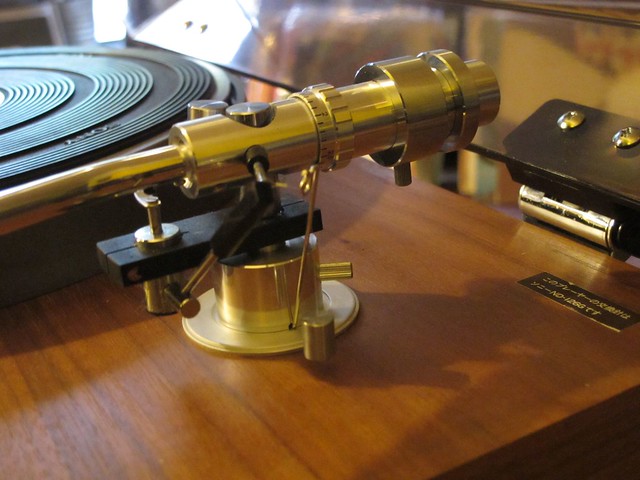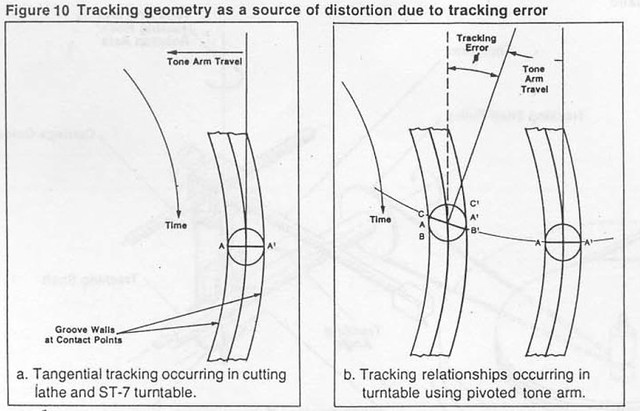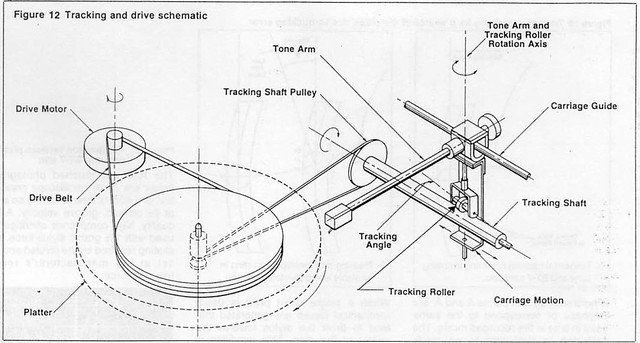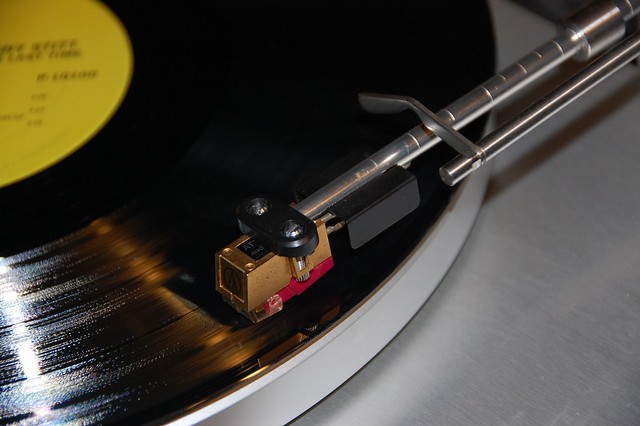Several pieces have changed hands this week.
About a year ago I picked up the original AR amplifier in a a Craigslist deal. I came across it while searching for a Marantz tuner and found it advertised at the same time as a tuner and pair of EPI M50 speakers. I bought them all and a few records at the same time.
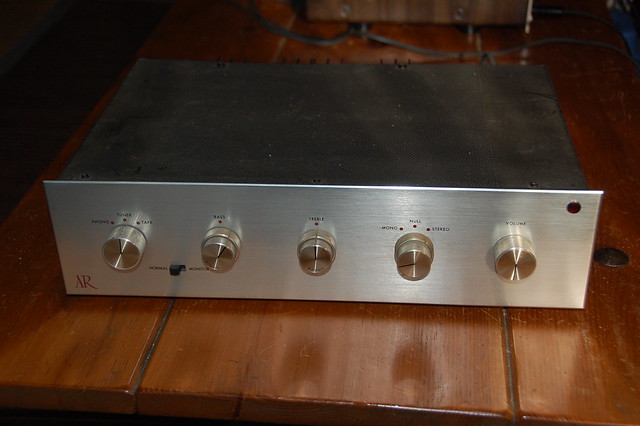
I knew little about it at the time I saw it but later found that it was very highly regarded and probably quite valuable. Not valuable enough to get rich on but enough to take a chance on. I brought it home and used it for a while but found a few things lacking.
It sounds fine I guess, but lacks inputs and some of the controls that might help in my space. I did think it sounded a bit thin. Maybe re-capping it would help that, but I decided it was worth more to me sold than in a stack of other receivers and amplifiers so sold it was.
Before I did get rid of it I was determined to clean it up a bit, which I did last weekend before the interested party showed up. In some respects I wish I hadn't bothered. The black case seemed to have kind of a soft, not quite sticky coating to it. It still seemed sort of black...sort of. Black like tar.
In fact that was probably what it was, cigarette tar! I am not sure but I think that was what it was. I spent over an hour rubbing it down with water, alcohol, dish soap, WORX (a natural hand cleaner I have), Goof-Off and various other means to try to remove the crud. It more or less came off, and eventually I gave in. I ended up with some lifted paint as well, but it did look better. The knobs were also a bit cleaner, and overall it looked pretty good.
If I had kept it I probably would have either really stripped and powder coated the case, or maybe built a wooden case for it. However the guy who came over liked it as is and took it home for my asking price with no argument. He had one before and seemed keen to add it to his collection even though he had paid about $200 in 1970 dollars back then and mine worked out to a bit more!
Here's another pic:

Anyway, I also made a couple of other deals this week.
My very first pair of decent speakers was a pair of Mission 700 that I bought in Fredericton back in around 1978. I set those up with a Taya turntable and a Technics SA-300 receiver, all of which were bought from Rick at Magic Forest Music Store which was in the basement of the Student Union Building at UNB at that time.
Last year I acquired an SA-400 Technics and later the SA-500 so had that part of the ``original`` system, but yesterday I bought a set of Mission 700s speakers, which are a bit newer but quite similar to those old ones I had. I also traded a pair of Koss M65 mini speakers, one of which I had re-foamed, for a White CEC BD1000 turntable. This turntable was very similar to the Taya I had back then. CEC in fact made the Taya I am sure as well as many other turntables of that era.
The speakers look pretty good and sound fine, but will look better when I get to work a bit on a few scratches and marks in the finish.
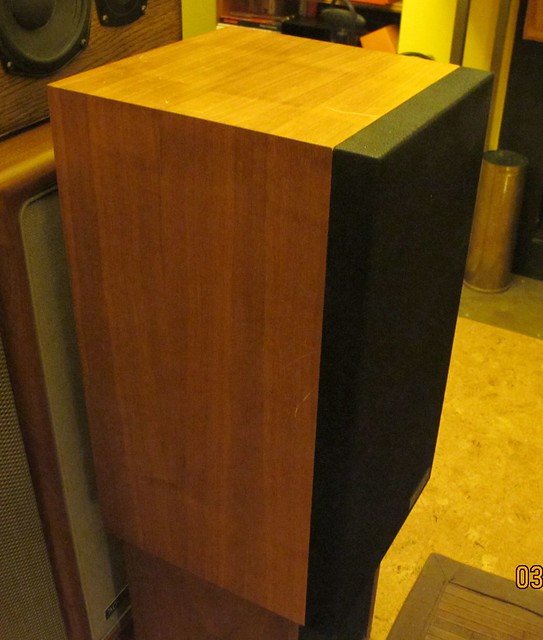
The turntable needs a bit more work, being quite scratched up on the lid, and otherwise a bit mangled. It didn`t help that the guy met me in the Safeway parking lot carrying the turntable in his backpack. The platter and mat were just bouncing around inside the lid! Fortunately he had locked down the tonearm and the cover was not cracked. In addition the suspension screws were still tightened down so not too much could move.
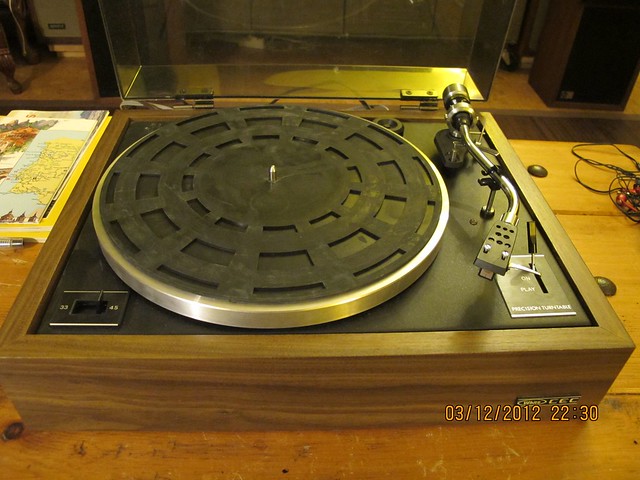
The lid has the usual scratches, and some sticker residue but other than that it should clean up fine. I had a belt that fit, as the one that was included was either the wrong model or was just too stretched. The Audio Technica cartridge and stylus seem to be fine at first examination. The headshell actually had a crack in it it but I think I have successfully epoxied that.
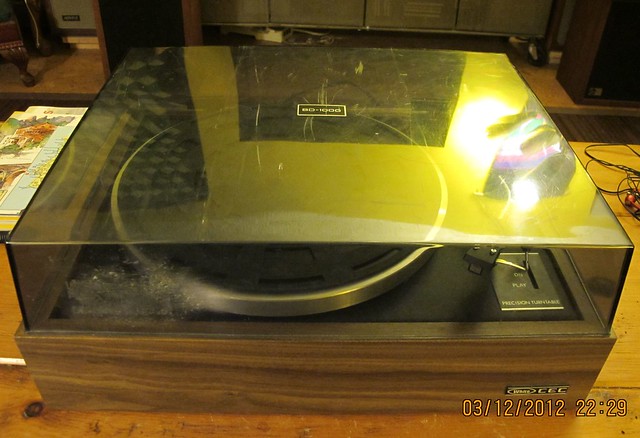
A cracked headshell was itself odd, but I figured out why. For one it is plastic. That is not necessarily a bad thing though most good shells are metal. Plastic is pretty inert sonically, electrically and magnetically. Metals might not be, but they might be stronger. This headshell did not have a chance though as the cartridge was installed in such a way as to clamp it over a grounding wire and so that the stylus could not be pushed on to the body all the way. Not surprisingly the headshell cracked as the cartridge screws were tightened. I glued, reversed the screws, moved the grounding wire, and it should be fine now.
The lid and other issues I will get to later...


